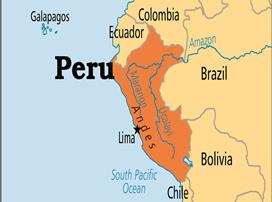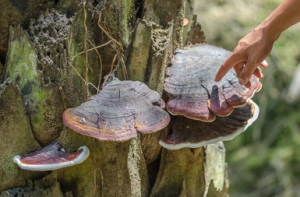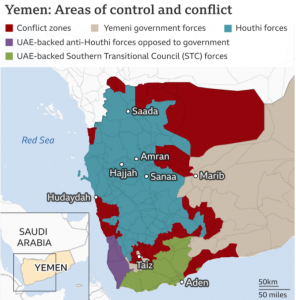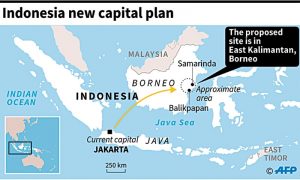Day-167 | Daily MCQs | UPSC Prelims | CURRENT DEVELOPMENTS
[WpProQuiz 183]
[WpProQuiz 183]
[WpProQuiz 182]
[WpProQuiz 180]
[WpProQuiz 173]
[WpProQuiz 172]
[WpProQuiz 171]
[WpProQuiz 170]
[WpProQuiz 167]
[WpProQuiz 165]
| [WpProQuiz 164] |
[WpProQuiz 163]
[WpProQuiz 156]
[WpProQuiz 154]
[WpProQuiz 150]
[WpProQuiz 148]
[WpProQuiz 147]
[WpProQuiz 146]
[WpProQuiz 143]
[WpProQuiz 142]
THE CONTEXT: Union ministry of chemicals and fertilisers, department of chemicals and petrochemicals, has given final approval for the setting up of a Plastic Park at Ganjimutt in Dakshin Kannada.
THE EXPLANATION:
According to the Ministry the park will be set up on 104 acres of Karnataka Industrial Areas Development Board (KIADB) land at an estimated cost of ₹62.77 crore. In that, 50% of the project cost, that is ₹31.38 crore, will be borne by the Union Government and the remaining 50% by the KIADB.
About the Plastic Park:
Significance of the Plastic Park Scheme?
THE CONTEXT: The Kerala Bird Atlas (KBA), the first-of-its-kind state-level bird atlas in India, has created solid baseline data about the distribution and abundance of various bird species across all major habitats giving an impetus for futuristic studies.
THE EXPLANATION:
The KBA accounts for nearly three lakh records of 361 species, that includes,
The KBA is considered to be a valuable resource for testing various ecological hypotheses and suggesting science-backed conservation measures.
Bird Atlas surveys shall be done twice a year.
THE CONTEXT: The Peruvian government declared a 90-day “environmental emergency” in damaged coastal territories, after an oil spill that saw 6,000 barrels of crude oil pour into the sea.
THE EXPLANATION:
What damage has the spill caused?
The spill has caused the death of marine wildlife and raised concerns around the livelihood of local fishermen and the economic consequences from the loss of tourism.
International Efforts for curtailing Oil Pollution:

Note: TERI has developed Oil Zapper Bacteria which can degrade the oil quickly.
THE CONTEXT: Researchers from Kerala have identified two new species of fungi from the genus Ganoderma that are associated with coconut stem rot. They have also genotyped the two fungi species, named Ganoderma keralense and G. pseudoapplanatum and identified genetic biomarkers.
THE EXPLANATION:
Basal stem rot

THE CONTEXT: The iconic Amar Jawan Jyoti (AJJ), which was inaugurated after the 1971 Liberation War of Bangladesh by former Prime Minister Indira Gandhi, even as Prime Minister announced the construction of a statue of Subhas Chandra Bose, restructuring the symbolism around the India Gate.
Symbol of colonial past’
About the National War Memorial:
The National War Memorial was inaugurated by Prime Minister on February 25, 2019 and ever since it was set up, political and military leaders of the country lay wreaths in remembrance at the new site rather than at the Amar Jawan Jyoti. It was built to commemorate all the soldiers who have laid down their lives in the various battles, wars, operations and conflicts of Independent India.
Q1. Hogenakkal Falls are located across which of the following river of India?
a) River Krishna
b) River Godavari
c) River Sharavati
d) River Kaveri
Answer: B
Explanation:
Highlights of Tiger Census 2018:
Note: India has already fulfilled its resolve of doubling tiger numbers, made at the St. Petersburg Declaration in 2010, much before the target year of 2022.
[WpProQuiz 141]
| [WpProQuiz 140] |
THE CONTEXT: The Andhra Pradesh government has brought the curtains down on the popular ‘Chintamani Padya Natakam’, which has enthralled people for almost 100 years.
THE EXPLANATION:

THE CONTEXT: India extended a $500 million-Line of Credit (LOC) to Sri Lanka for urgent fuel imports, days after providing $900 million relief to the island nation facing one of its worst economic downturns.
THE EXPLANATION:
What is the current economic situation in Sri Lanka?
THE CONTEXT: A suspected drone attack in Abu Dhabi, the capital of the United Arab Emirates (UAE), caused multiple explosions in which three people were killed —two Indians and one Pakistani.
THE EXPLANATION:
Who are the Houthis?
Founded in the 1990s by Hussein Badreddin al-Houthi, a member of Yemen’s Shia majority, the Houthi movement has a pretty straight forward slogan or sarkha: “God is great, death to America, death to Israel, curse on the Jews, victory to Islam.” After Yemeni soldiers killed Hussein in 2004, his brother Abdul Malik took over.
How did Saudi Arabia get involved?
The rise of the Houthis sent alarm bells ringing across Sunni Arab states, particularly Saudi Arabia. A Saudi-led coalition — backed by the US, UK and France — then launched an air campaign in Yemen, with the aim of defeating the rebel group. What the coalition thought would take only a few weeks has stretched on for seven years, growing into a full-blown civil war.

THE CONTEXT: Indonesia’s parliament has approved a bill to relocate the nation’s capital from Jakarta to a jungled area of Kalimantan on Borneo Island.
THE EXPLANATION:

THE CONTEXT: The Supreme Court has upheld the liquidation of Devas, whose foreign investors continue to fight for compensation following the cancelled 2005 satellite deal with Antrix.
THE EXPLANATION:
What was the Devas-Antrix deal?
What is the current Issue?
What led to the liquidation?
Antrix filed a plea in the National Company Law Tribunal in January 2021 for liquidation of Devas in India, which it said was incorporated in a fraudulent manner. The NCLT order held that the start-up was “incorporated in a fraudulent manner and for unlawful purposes”.
THE CONTEXT: Web 3.0 is the potential next phase of the internet wherein the internet will be decentralized and run on blockchain technology.
THE EXPLANATION:
THE CONCEPT OF WEB 3.0:
It is used to describe a potential next phase of the internet, created quite a buzz in 2021. The model, a decentralized internet to be run on blockchain technology, would be different from the versions in use, Web 1.0 and Web 2.0. In web3, users will have ownership stakes in platforms and applications unlike now where tech giants control the platforms.
EARLIER VERSIONS
What are some of the concerns?
In Web 2.0, most of the data on the internet and the internet traffic are owned or handled by very few behemoth companies. This has created issues related to data privacy, data security and abuse of such data. It is in this context that the buzz around Web3 is significant.
THE CONTEXT: Jammu and Kashmir Police that biggest challenge for security forces in the union territory are going to be hybrid terrorists. Hybrid terrorists are those who are not listed with the security forces and are only brought in by terror groups just once or twice to carry out terrorist attacks.
THE EXPLANATION:
According to JK Police, there are two biggest challenges with regard to terrorism, they are
Hybrid Terrorism:
In 2021, Kashmir valley saw dozens of attacks soft targets like civilians, policemen (on leave), political workers and people from minority communities. Security forces are now focussing on identification of such hybrid terrorists.
Narco Terrorism:
The security forces are facing in the Kashmir Valley is narco-terror. Tons of narcotics have been recovered by security forces in various districts of the Kashmir valley and security agencies believe that the money from these drugs is being used by the terror outfits. The arms and ammunition are mostly bought from money generated through drug trafficking. These drugs are sold in different parts of the country.
Kashmir is very near to Golden Crescent

Q1. Consider the following statements about National Commission for Women:
Which of the statement given above is/are correct?
a) 1 and 2 only
b) 2 and 3 only
c) 3 only
d) 1, 2 and 3
Answer: a)
Explanation:
to have started from the wandering bards of North India (Uttar Pradesh) known as Kathakars, meaning storytellers.
Sanskrit text written by Bharata Muni.
gestures, facial appearances and eye work.